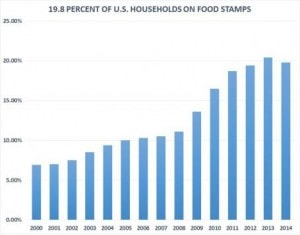
Protesters march to LAPD headquarters during the National Day of Protest to Stop Police Brutality in Los Angeles, California October 22, 2014.
Credit: REUTERS/Lucy Nicholson
The U.N. Committee against Torture urged the United States on Friday to fully investigate and prosecute police brutality and shootings of unarmed black youth and ensure that taser weapons are used sparingly.
The panel’s first review of the U.S. record on preventing torture since 2006 followed racially-tinged unrest in cities across the country this week sparked by a Ferguson, Missouri grand jury’s decision not to charge a white police officer for the fatal shooting of an unarmed black teenager.
The committee decried “excruciating pain and prolonged suffering” for prisoners during “botched executions” as well as frequent rapes of inmates, shackling of pregnant women in some prisons and extensive use of solitary confinement.

March 13, 2010: Tea Party rally against the continuation of the Affordable Care Act (ACA).
Credit: Fibonacci Blue
The period of Open Enrollment, the annual window in which eligible Americans can sign up for health insurance under the Affordable Care Act (ACA), has got off to a fairly smooth start. Even so it is clear that the act, also known as Obamacare, has another difficult year ahead. The attempt to introduce a “fairer”, more affordable healthcare system has been notably controversial from the start and this looks set to continue.
Republicans are in control of both houses of Congress following the mid-term elections and have renewed their commitment to repeal Obamacare. The Supreme Court is also to consider another challenge to the law under King v Burwell. The never-popular act’s approval ratings, according to a recent Gallup poll have hit a new low of 37%.
These troubles persist even though the […]

The Chinese Academy of Sciences recently hosted a small workshop on devices that are used to measure ocean temperatures.
Credit: Corbis/Zhang Jiansong
This article is about the future landscape of science in general, and climate science in particular.
Just a few days ago, the Chinese Academy of Sciences hosted a small workshop which involved scientists from around the world that work on a device called the Expendable Bathythermograph, or XBT for short. The obscurity of the conference speaks volumes; it didn’t get much, if any, press attention. This fact tells a lot about the host nation.
XBTs are devices that are used to measure ocean temperatures. They were developed many decades ago to help navies determine the depth of the thermocline. Submarines positioned below the thermocline are more able to avoid detection. The devices are released from the deck of a ship and they fall through the water, recording temperatures along the way. […]
A European satellite beamed images to earth using new laser-based communications technology on Friday, opening the way for uninterrupted and near instantaneous viewing of natural disasters being sent to governments and relief agencies.
The images were a test of a 450 million euro ($562 million) space data highway being constructed. Called European Data Relay Satellite (EDRS), it will allow faster and more secure transmission of large amounts of data, such as pictures and radar images, to and from earth.
It is seen as particularly useful for monitoring flood and earthquake damage in real time.
“Currently, a satellite downloads the data that it acquires whenever it is within view of one of four ground stations on earth,” Josef Aschbacher, head of the European Space Agency’s (ESA) Earth Observation Program Planning & Coordination Service, told Reuters ahead of Friday’s transmission.
“That means there can be periods of 45 to 90 minutes from the visibility of one station to another,” he said.
Once completed, EDRS will […]
Nearly one in five U.S. households will celebrate Thanksgiving on food stamps this year, according to the latest data from the U.S. Department of Agriculture on participation in the Supplemental Nutrition and Assistance Program.
Back in fiscal 2000, there were 106,061,000 households in the United States and, according to a USDA report published in November 2012, there was a monthly average of 7,335,000 households—or 6.9 percent—getting food stamps that year.
As of this August, according to the most recent data released by USDA, there were 22,729,389 households on food stamps. That equaled 19.75 percent of 115,048,000 households in the country at that time.
In each of the two previous fiscal years, the percentage of American households on food stamps in the average was near 20 percent, hitting 19.4 percent in 2012, 20.4 percent in 2013.
As of August, according to the Department of Agriculture, there were 46,484,828 individuals in the food stamp program.










